#Greenwich meridian
Video
University of Greenwich - Old Royal Naval College by John Wolfe
Via Flickr:
Greenwich - London - 2023
#University of Greenwich#old Royal Naval College#Greenwich Hospital#East London#college Way#the Admirals house#King George II#statue#clock tower#Greenwich meridian#meridian#Naval College#London#Nikon d850#wide angle#Panorama#panoramic#outside#Outdoors#day#lawn#quad#architecture#Hill#prime Meridian#Royal Observatory#Queens House#clouds#sky#summer
0 notes
Text

250 years military maritime sea clocks
2023 marks the 330th anniversary of John Harrison's birth but also the 250th anniversary since the last bit of Longitude Prize money was awarded by British parliament.
In 1773, 80 years old English clock maker John Harrsion was awarded the final amount of Prize money for his " seawatch n° 1 " H4 clock which solved the Longitude problem.
Harrison had been working half a century to perfect his watches . Note the great details in these paintings, with Harrison holding John Jefferys watch and his own H4 clock on the table besides him.
As Great Britain asserted its position with France and had to avoid these precious time keepers could be caught by Spanish or Dutch navy ships, copies of Harrison H4 were sent on sea trials.
A time of sextants and clocks, while today's rise of technology has isolated us from the natural World, unfortunately much to our detriment.
(National Maritime Museum - Greenwich GB)
#Longitude#Astronomy#Horology#Greenwich#Harrison#Royal Navy#Meridian#Sea trial#timekeeper#chronometer#1773#MoonwatchUniverse#Latitude#Flamsteed#Arnold#Earnshaw#wrist watch#pocket watch#Zulu time
32 notes
·
View notes
Text


Greenwich, London
I find it fitting that my last trip of the year was to the Prime Meridian at the Royal Observatory Greenwich. It's a nice end to a year of travel. We also visited the Cutty Sark, Greenwich Pier, took a boat on the Thames to Embankment, where the London Eye is, and Covent Garden for their annual Christmas display.
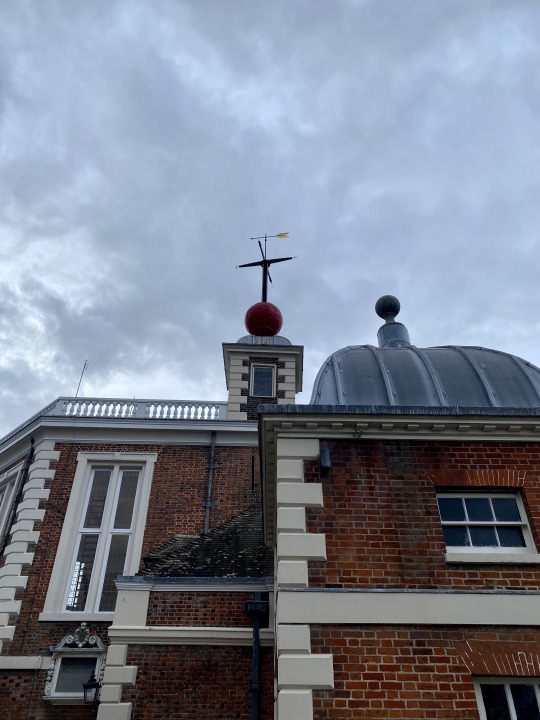
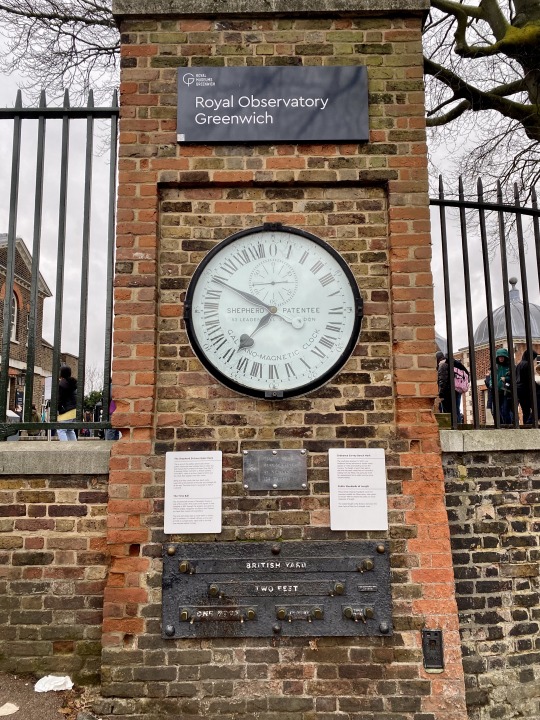



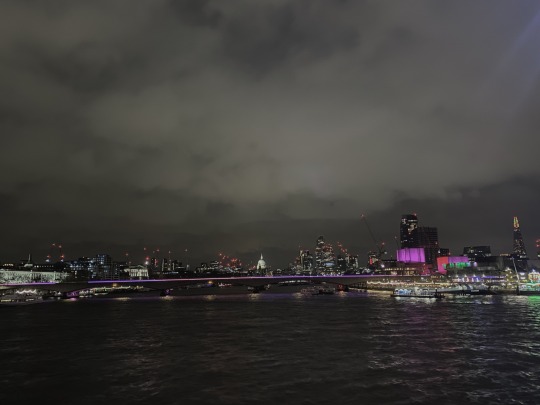



#london#travel#travel journal#travelphotography#journal#travel diary#memories#london eye#covent garden#greenwich#prime meridian
4 notes
·
View notes
Text
so what i want to know is why Quaggy hasn't yet turned up among the Thames girls
#i learned about this because of the names of the meeting rooms at my workplace#bc theres effra walbrook and quaggy#so of course i had to google and see if quaggy was another thames tributary or if it was just uhh a funny word they made up#the quaggy apparently runs through southeast london - greenwich and lewisham among other areas#so i'm picturing her as basing her personality around canary wharf and also the greenwich meridian#canary wharf is probably too far northwest in fairness but we need a banker River#i know that realistically the reason she hasn't appeared yet is because peter hasn't yet had a case in that area#but i can't help thinking that it's just because his narration would never stop making smart comments over her name#also there are probably loads of thames tributaries that haven't appeared yet/at all because i guess you'd just have too many to keep track#of at some point/all the roles they could play are more or less filled#anyway imma stop rambling now#rivers of london#rol#via shitposts
4 notes
·
View notes
Text
NaNoWriMo Day 27
Heywood Banks comes to Lowell, MI
On a freezing November day, I logged in 2,027 words in the 50k-word challenge for a total of 48, 472 words, after filing a story about comedian Heywood Banks aka Toastmaster General for The Lowell Ledger.
I love Banks’s “About” page on his website. Not only was Banks born on April Fool’s Day in 1950, but he didn’t apply himself (whatever that means), he sang on…
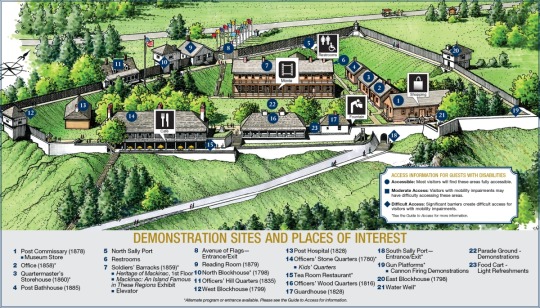
View On WordPress
0 notes
Note
(first off: I'm not an astronomer, and I may be wildly off, but…) I had always assumed that "This too was incorrect. By almost a quarter of an hour", on the first page of Good Omens, was a throwaway joke. Today I realised it might actually be a reference; was it?
AIUI, Ussher said that although the creation occurred on the autumn equinox (22 September), he gave the date as 21 October to account for the drift caused by the Julian calendar, which was in use in Ireland at that time. I think he also said that it occurred at 9am Irish time, because that's noon in Jerusalem.
What just occurred to me is that Irish civil time is calculated from the Greenwich meridian. But Ussher lived in Armagh, 6.55° west of Greenwich. The solar time in Armagh at noon in Jerusalem is 9:19am and on 21 October is 9:11am. So 9am is off by almost a quarter of an hour.
Thanks for all the happy memories and the solidarity over the years.
I just want to show this to Terry Pratchett.
7K notes
·
View notes
Photo

Prime Meridian of the World- The line in Greenwich - Longitude 0º. #mrmsl #outandabout #primemeridianline #prime #meridian #line #eastern #western #hemispheres #royalobservatory #royalobservatorygreenwich #greenwich #london🇬🇧 #london #londonlife https://www.instagram.com/p/CmruximIDjU/?igshid=NGJjMDIxMWI=
#mrmsl#outandabout#primemeridianline#prime#meridian#line#eastern#western#hemispheres#royalobservatory#royalobservatorygreenwich#greenwich#london🇬🇧#london#londonlife
0 notes
Text
Ok so, I was getting bored at the train station and saw an ask where Neil Gaiman said that the numbers on Aziraphale's phone were probably the original bookshop number, even though that would not be historically accurate, or something along those lines.

So, bored as I was, I had a random thought and typed those numbers as latitude coordinates on the Greenwich meridian.
And since Neil has spoken and I would never ever question his words,

I guess it's entirely accidental that those coordinates mark a place in Epping Forest, London,

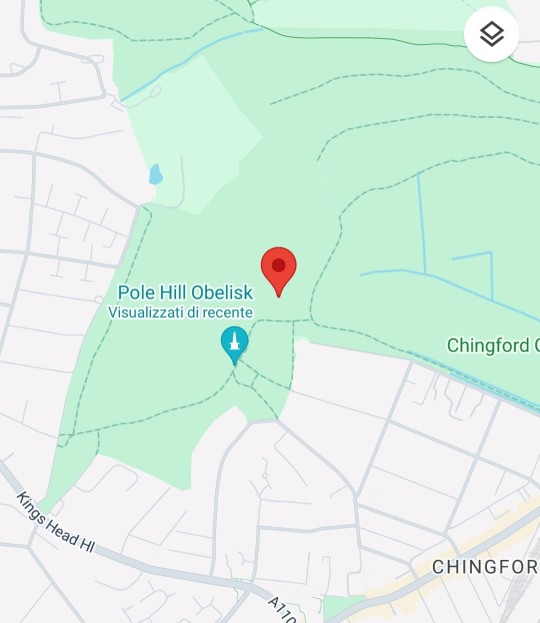
that used to belong to a man that loved collecting antique books and dreamt of opening a fine books related business with his dearest friend.

A man who never managed to fulfill his dream, but who is remembered today by a plaque on the Pole Hill Obelisk, originally placed to serve as a guide for astronomical observations.

It must be a coincidence, undoubtedly.
653 notes
·
View notes
Video
London from Greenwich park by John Wolfe
Via Flickr:
On top of the hill, Summer 2023
#London#Canary wharf#Greenwich#Greenwich park#hill#observatory#old naval college#trinity#university#RNB Thames#Museums#River#Thames#Summer#outdoors#sunny#Observatory hill#Meridian#park#East London#Skyscrapers#skyscraper#highrise#nikon#D850#Panorama#wide#wide angle#panoramic#sunshine
2 notes
·
View notes
Text
Hour Zero: Time Starts Here
Hour Zero: Time Starts Here
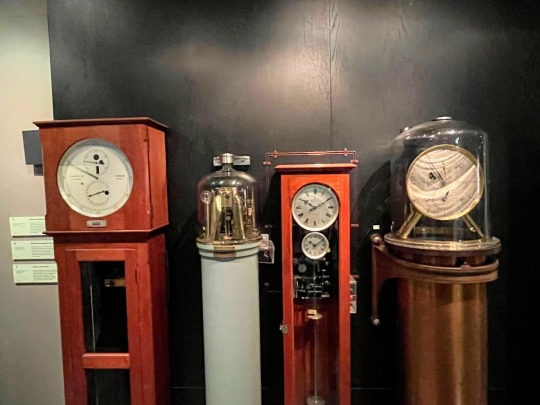
View On WordPress
0 notes
Text
Didn't wanna clog up your post, and these sources are more about relationships of time with space/place, but here's some stuff that I've encountered:

---
“Temporal sovereignty”. Contemporary US/Australian claims over time-keeping. Reclaiming agency by operating on Indigenous/alternative time schedules. The importance of the “time revolution” in the Victorian era to Euro-American understandings of geology and deep past, precipitating nineteenth-century conquest of time. Mid-twentieth century understanding of “deep time” and its co-option by the Australian state. "Deep time dreaming".
Laura Rademaker. “60,000 Years is not forever: ‘time revolutions’ and Indigenous pasts.” Postcolonial Studies. September 2021.
---
How "time is a form of enclosure". Checkpoints, "baroque processes to apply for permits to travel", fences, incapacity to change residences, and other "debilitating infrastructures" work to "turn able bodies into a range of disabled bodies" by "stretching time". This is a "slow death" and a simultaneous "slowing down of life" because "it takes so long to get anywhere" and "movement is suffocated". Thus "time itself is held hostage". This "suspended state" of anxiety and endless wait-times "wreaks multigenerational psychological and physical havoc". "Checkpoints ensure one is never sure of reaching work on time. Fear of not getting to work then adds to the labor of getting to work [...]. Bodies in line at checkpoints [...] [experience] the fractalizing of the emotive, cognitive, physiological capacities" through a "constant state of uncertainty". "The cordoning of time through space contributes to an overall 'lack of jurisdiction over the functions of one's own senses' [...] endemic to the operation of colonial rule". This "extraction of time" produces a "depleted" and tired person "beholden to the logistics" of administrative apparatuses, community suffers and "communing is thrawted".
Jabir K. Puar. "Spatial debilities: Slow Life and Carceral Capitalism [...]." South Atlantic Quarterly 120. April 2021.
---
The "apocalyptic temporality" that presumes extinction. Indigenous Polynesian/Pacific perceptions and ways of being "destabilize the colonial present" and also "transfigure the past" by "contesting linear and teleological Western time". Indigenous "ontologies of cyclical temporality or inhabitation of heterogenous time". How United States and Europe colonized Oceania for weapons testing and conquest of tropical Edens while rendering local Indigenous people "ungrievable" and "without future". "Pacific time is a layering of oral and somatic memory". Instead of accepting an apocalyptic future or doomsday or nightmare, assert the possibility of a livable future, in spite of "Western temporal closures".
Rebecca Oh. “Making Time: Pacific Futures in Kiribati’s Migration with Dignity, Kathy Jetnil-Kijiner’s Iep Jaltok, and Keri Hume’s Stonefish.” MFS Modern Fiction Studies. Winter 2020.
---
Colonial "space-time homogenization". The experience of "homogenous, empty time". Orientalist "time lag" and the naturalization of a supposed East-West hemispheric divide. Late Victorian imperial conceptions of temporality. The British establishment of the Greenwich meridian and International Date Line. The influence of British imperial seafaring and cartography on the establishment of time and on European/US feelings towards the Pacific Ocean. How the origin of English science fiction literature, space travel aspirations, and time travel narratives coincided with the Yellow Peril and xenophobia targeting East Asia.
Timothy J. Yamamura. "Fictions of Science, American Orientalism, and the Alien/Asian of Percival Lowell". Dis-Orienting Planets: Racial Representation of Asia in Science Fiction. 2017.
---
Imprisonment as time-control. Here “the question of the past the present and the future indeed time itself looms” especially around the prisoner. “The law renders punishment in units of time”, taking away a the right to a future. There are alternative worlds, many of them, which have been practiced and brought into being, which colonization tried to obscure. There is “a whole anthropology of people without future embedded in the assumptions that justify mass imprisonment as poverty management”. "The prison’s logic exterminates time as we know it”. In prison, bodies have been alienated from time and history ... the punishment seems endless ... to “achieve a measure of agency and possibility it is necessary to redeem time”, to refuse the doom, fated to a life of abandonment.
Avery Gordon. “Some Thoughts on Haunting and Futurity.” borderlands. 2011.
---
Bursting the Limits of Time: The Reconstruction of Geohistory in the Age of Revolution (Martin J.S. Rudwick, 2010) explores how the advent of European sciences like geology, preceding the "time revolution" when Europeans experienced revelations about the scale of "deep time", happened alongside and after the Haitian Revolution and other abolitionist movements. French, German, and British naturalists translated the explosion of "new" scientific knowledge from the colonies, so that the metropolitan European audience became a market for historical and scientific "narratives" about how "nature" and time functioned.
---
Prartik Chakrabarti's writing on time, temporality, and "the deep past" as British imperial concepts built in conversation with colonial encounters with South Asia. (British Empire reaching such heights in the middle of the nineteenth century at the same time that the newly professionalized sciences of geology were providing revelations about the previously unknown vast scale of "deep time". New colonial anthropology/ethnology also presumed to connect this "primitive" past with "primitive" people.)
See Chakrabarti's "Gondwana and the Politics of Deep Past". Past & Present. 2019.
---
We must witness and consider "multiple space-times" to understand how "unfree labour" of plantations was "foundational" to contemporary work, movement, subjugation, health, etc. We must "trace the geneaology of contemporary sovereign institutions of terror, discipline and segregation" [workplaces, imperial/colonial nations, factories, mines, etc.] back in time to plantations. How "the [plantation] estate hierarchy survives in post-plantation" times and places, with the plantation "being a major blueprint of socialization into [contemporary] work". The plantation was "a laboratory for [...] migration regulation in subsequent epochs" that practiced methods of racializing and criminalizing.
Irene Peano, Marta Macedo, and Colette Le Petitcorps. "Introduction: Viewing Plantations at the Intersection of Political Ecologies and Multiple Space-Times". Global Plantations in the Modern World: Sovereignties, Ecologies, Afterlives. 2023.
---
“Slow life” and the relationship between “settler colonialism, carceral capitalism, and the modulation of ... registers of time,” including “historical time, the stealing of time through the expansion of labor time, ... and the cordoning off of space through time”. For example, as in occupied zones or at border checkpoints, “the cordoning off of space through time” includes physical architecture like fences and customs, obstacles that impede movement and rhythm, so that “nothing ever happens on time” and there is “a stretching of time”. All the wasted time spent in line, showing papers, waiting for confirmation, etc. “is not a by-product of surveillance, it is the point of surveillance”. Such that “uncertainty becomes a primary affective orientation ... flesh as felt” with a racializing effect“. "This is a biopolitics conditioned through pure capacitation and its metrics”:
Jasbir Puar. In: “Mass Debilitation and Algorithmic Governance” by Ezekiel Dixon-Roman and Jasbir Puar. e-flux Journal Issue #123. December 2021.
---
"Starfish time". Indigenous Australian/Aboriginal perceptions of time and "attending to more-than-human agencies of time". Acknowledging the timescales of entire ecosystems, as part of multispecies relationships, a "transcorporeal collaboration". Cyclical time vs linear time. Contrasting timescales experienced by insects that only live a few days and creatures that live for decades. "Starfish may seem to be still" but they slowly move; "larval time" and "the time it takes for eggs to develop and hatch"'. The "immensity of the alterity is literally incomprehensible"; "we can't know what these beings know" but we "should seek respect and be aware of how our lives are entangled".
Bawaka Country including, S. Wright, S. Suchet-Pearson, K. Lloyd, L. Burarrwanga, R. Ganambarr, M. Ganambarr-Stubbs, B. Ganambarr, D. Maymuru. “Gathering of the Clouds: Attending to Indigenous understandings of time and climate through songspirals.” Geoforum. January 2020.
---
The use of calendars, dates, clocks, and industrial/corporate temporality as fundamental to the rise of plantations and financialization in United States/Europe, with a case study of the modern Colombian/Latin American state. Observance of certain dates and strict adherence to specific calendars support "mythologized deeds and heroic retellings" of colonization and industrialization. “The evolution and internalization of disciplined concepts of time” were intimately tied to the rise of wage labor in industrializing England and later during the global ascendancy of work and industrialized plantation monoculture, but the persistence of alternative time should “serve as a reminder that futures and the demarcation of epochs are never as simple as a neatly organized calendar”.
Timothy Lorek. “Keeping Time with Colombian Plantation Calendars.” Edge Effects. April 2020.
---
Indigenous people of Alaska and the US control over time management. For the past 50 years, Yupiak people have been subject to US government’s “investment in a certain way of being in time” which “standardized the clock” and disrupted human relationships with salmon. This US management model “anonymized care” and made “a way of attending to the life and death of others that strips life of the social and ecological bonds that imbue it” with resilience and meaning, which “ignores not only the temporality of Yupiaq peoples relations with fish, but also the human relations that human-fish relations make possible”. This disregards “the continuity of salmon lives but also the duration of Yupiat lifeworlds ... life is doubly negated” ... “futures depend on an orientation to salmon in the present”.
William Voinot-Baron. “Inescapable Temporalities: Chinook Salmon and the Non-Sovereignty of Co-Management in Southwest Alaska.” July 2019.
---
"Idling" and "being idle" as a form of reclaiming agency and life. Case studies of fugitive Blackness in Caribbean plantation societies. “Disruptive waiting”. “The maroon’s relationship to time challenges [both] the totalizing time of the modern state, but also the [...] narratives to negotiate struggle in the [...] present" in "antagonistic relationship with colonial power". Defying the “European narrative of modernity”. Refusing to be productive.
Amanda Lagji. “Marooned time: disruptive waiting and idleness in Carpentier and Coetzee.” Safundi: The Journal of South African and American Studies. March 2018.
---
Indigenous futures. "It is important to remember that some futures never went anywhere" and "yet they survive. These are futures suppressed and cancelled by colonial power." These are "parallel futures". "Colonial power must control the past so as to deny the emergence of" an alternative future; "colonial power creates a future in advance so that no others will take its place". Poor, racialized, Black, Indigenous people manifest alternative futures.
Pedro Neves Marques. "Parallel Futures: One or Many Dystopias?" e-flux. April 2019.
---
The "legacy of slavery and the labor of the unfree shape and are part of the environment we inhabit". The "idea of the plantation is migratory" and it lives on "as the persistent blueprint of our contemporary spatial troubles", so we must seek out "secretive histories" that no longer "rehearse lifelessness".
Katherine McKittrick. “Plantation Futures.” Small Axe. 2013.
---
“The temporal dispossession” of Congolese people. There is an “impossibility” of “predictable time” because temporal dispossession “disrupts the possibility of building a future”. Livelihoods/income is driven by market and price fluctuations in United States and Europe tech industries, so “there is an inescapable day-to-day sense of uncertainty”. As Mbembe says, “in Africa, the spread of terror ... blows apart temporal frames”.
James H. Smith. ‘Tantalus in the Digital Age: Coltan ore, temporal dispossession, and “movement” in the Eastern Democratic Republic of the Congo.’ American Ethnologist Volume 38 Issue 1. February 2011.
---
“Slow death”. Chronic illness not just as a byproduct of colonialism/dispossession, but also as part of its aim, a weapon that debilitates people, who become exhausted. Dooming poor and racialized people to lives “without future” through debility, “a condition of being worn out”. Relationship of illness, lack of healthcare, and debt as functionally incapacitating, a form of death sentence. A “zone of temporality” unfolding unlike abrupt/sudden traumatic events and becoming an inescapable condition.
Jasbir K. Puar. The Right to Maim: Debility, Capacity, Disability. 2017.
---
The extension of poverty, landlessness, homeless, and imprisonment. "To be unable to transcend the horror of such a world order is what hell means", and "without a glimpse of an elsewhere or otherwise, we are living in hell". The utopian is not only or merely a “fantasy of” and for “the future collectivity” but can be claimed and built and lived here, now. There is "no guarantee" of “coming millenniums or historically inevitable socialisms”, no guarantee that “the time is right” one day if we wait just long enough. Instead: "can a past that the present has not yet caught up with be summoned to haunt the present as an alternative?" The "utopian margins", an alternate world crossing time and place, an "imaginative space and temporality to trace the remains of what "was almost or not quite, of the future yet to come", living as if it were the present. Colonialism tried to crush the many headed hydra of the revolutionary Atlantic, those who challenged the making of the modern world system.
Avery F. Gordon. As interviewed by Brenna Bhandar and Rafeef Ziadah. “Revolutionary Feminisms: Avery F. Gordon.” As transcribed and published online in the Blog section of Verso Books. 2 September 2020. And: Avery Gordon. “Some thoughts on the Utopian.” 2016.
---
The US/European "city is the site of regulatory regimes" that try to impose a definitive narrative about history, progress, and possible futures. But it cannot achieve "a wholly Apollonian, seamlessly regulated realm" because the land "continues to be haunted by the neglected, the disposed of, the repressed". The "commodification" of landscapes "circulates an imaginary geography" mediated through advertisements, labels, soap operas, television, etc. which celebrate "sanctioned narratives and institutionalized rhetoric". A "wild zone" of informal spaces, debris. "Ruins are places where the things, people, and "other memories can be articulated". There is "a spectral residue" that "haunts dominant ways of seeing and being". "Alternative stories might be assembled", so that we can respect the people banished to abandonment, the periphery, and reclaim agency.
Tim Edensor. “The ghosts of industrial ruins: ordering and disordering memory in excessive space.” Environment and Planning D: Society and Space volume 23. 2005.
Also, how "master narratives of history as progress decompose" when faced with "a continuously remembered past" when "the ghosts of this past rear up in the ruin" to expose "the debris of unprecedented material destruction" of colonialism/empire-building. These "hauntings rupture linear temporality" and recall those people beaten down as "the trash of history". It is "essential to see the things and the people [...] banished to the periphery [...]."
Tim Edensor. "Haunting in the ruins: matter and immateriality". Space and Culture Issue 11. 2002.
---
"Many kinds of time" of bacteria, fungi, algae, humans, and "Western colonialism meet on the gravestones". Some creatures, like lichen, are very long-lived and "these temporal feats alert us that modernity is not the only kind of time, and that our metronomic synchrony is not the only time that matters". The "long duree evolutionary rapprochements to the quick boom and bust of investment capital" where "minor forms of space and time merge with great ones". Extinction is "a breakdown of coordinations with reverberating effects". Ghosts remind us that we live in an impossible present, a time of rupture. "Deep histories tumble in unruly graves that are bulldozed into gardens of Progress". "Endings come with the death of a leaf, the death of a city, the death of a friendship".
Elaine Gan, Anna Tsing, Heather Swanson, and Nils Burbandt. “Introduction: Haunted Landscapes of the Anthropocene.” Arts of Living on a Damaged Planet: Ghosts and Monsters of the Anthropocene. 2017.
---
Everywhen: Australia and the Language of Deep History. (Edited by Ann McGrath, Laura Rademaker, and Jakelin Troy. 2023.)
Chapters include: "Bugarrigarra Nyurdany, Because of the Dreaming: A Discussion of Time and Place in Yawuru Cosmology" (Sarah Yu et al.); "Songs and the Deep Present" (Linda Barwick); "Yirriyengburnama-langwa mamawura-langwa: Talking about Time in Anindilyakwa (James Bednall); "Across 'Koori Time' and Space (John Maynard)
#im sorry i guess i accidentally deleted this post so here it is again#colonial#imperial#temporality#abolition
293 notes
·
View notes
Text

Meridian West, Greenwich
1965
Julian Sofaer
Modernism Beyond Metro-Land
44 notes
·
View notes
Photo
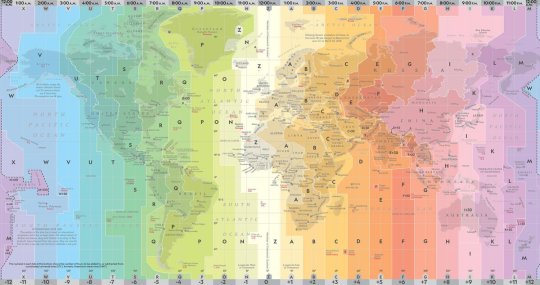
Time zones cover about 15 degrees of longitude. They're measured in reference to the Meridian of Greenwich, England (0˚ longitude). Time at Greenwich is coordinated universal time (UTC) formerly Greenwich mean time (GMT).
From Family Reference Atlas
by @NatGeoMaps
126 notes
·
View notes
Text
Come to the 50th Island Art Fair in Grand Ledge
https://www.podbean.com/media/share/pb-pervq-146605e
Bring Joy and Love to the Island Fair. There will be no sad faces.
Be a part of history, as this epic fair, run by volunteers only, celebrates 50 fantastic years on the island on July 29, 2023. What better way to make up for the missing Covid year and to enhance this year’s celebration than to add 50 new vendors for a total of more than 180…

View On WordPress
0 notes
Note
i get what map post op was trying to say and not to be THAT person but “north and south are not up and down and their orientation doesn't matter on earth either” is a maddening take to read as a geophysical oceanography student LMAO like unless you know something about an imminent magnetic pole reversal that we dont, their orientations do in fact matter. also, fun fact north polar projection is used for oceanographic figures and measurements! the lat and long calculations are janky but its useful for displaying arctic ocean data which can be extremely confusing and broken up otherwise. anyways sorry for depositing this tangent in your inbox 👍
To be counter pedantic I think unless you’re doing something with physical sciences/navigation, the way polar orientation is represented on a 2D plane is less important. A lot of maps used outside of the physical sciences are for political and social representation, and so the way the earth is placed on a map is not a neutral or apolitical process. It’s one of the reasons a lot of our language for generalising political blocs is cartographic - East and West, Global North and Global South. The standard international prime meridian is adapted from the Greenwich Meridian, which locates England at the literal centre of the North and demarcates the West/East as political entities.
So like while I take your point that polar orientation isn’t trivial even for the general public (they determine how compasses work and shit lol), when representing the whole world on a map it tends to be for political and social purposes, at which point orientation takes on different meaning and has different stakes. One issue is that the north-up map has been naturalised - its orientation is taken for granted as objective, as representing the world scientifically, naturalising along with it the western political interests of being represented as physically literally on the top of the world (which is the point I took the original post to be making). That’s actually why the UN map is cool because it makes those directional descriptions incoherent. I’m not coming out in favour of the UN as a decolonial entity or whatever lol, just that its logo is an example of how maps are always political documents with political meaning, and so trying to universalise a cartographic representation of the entire world is worth thinking about!
36 notes
·
View notes